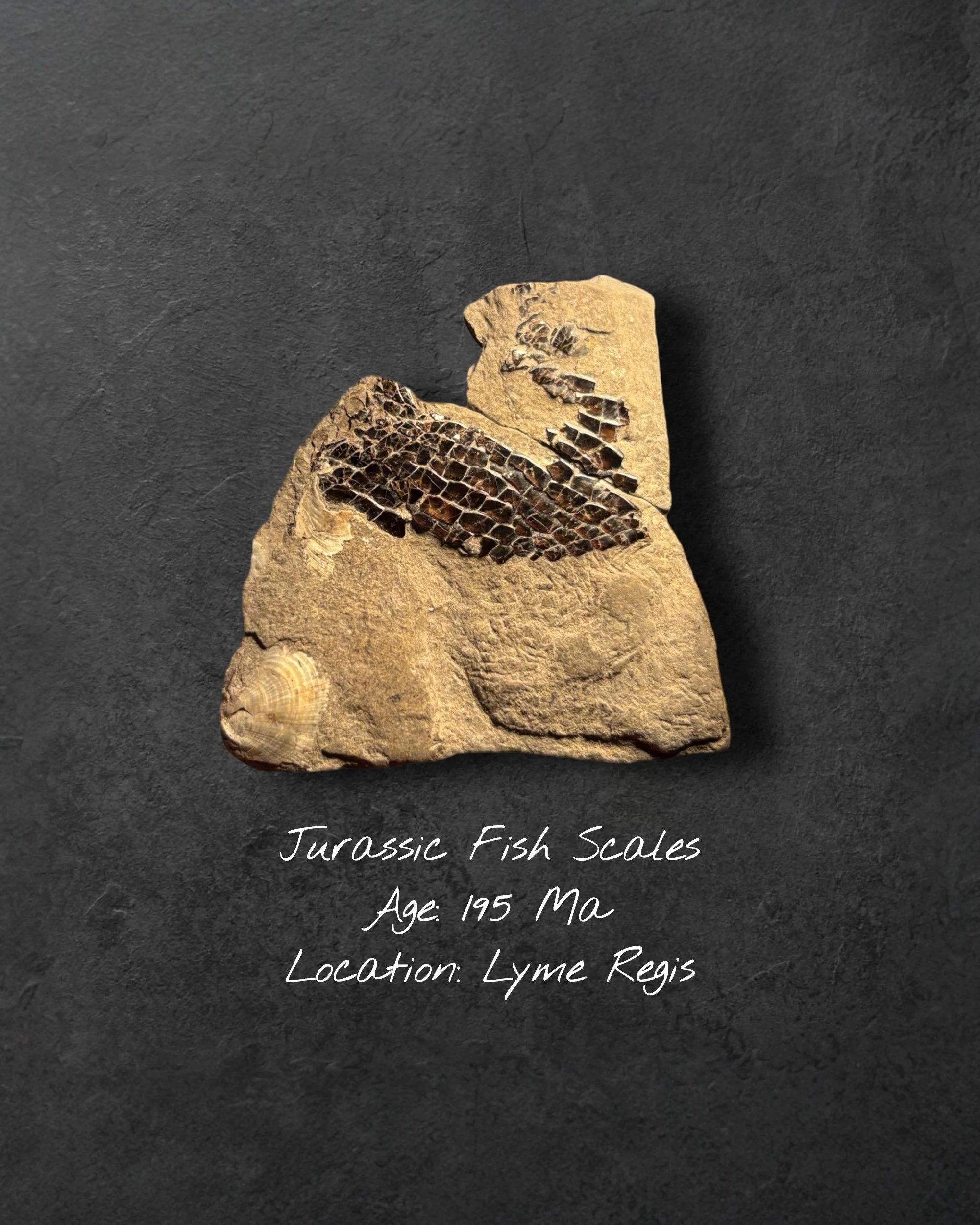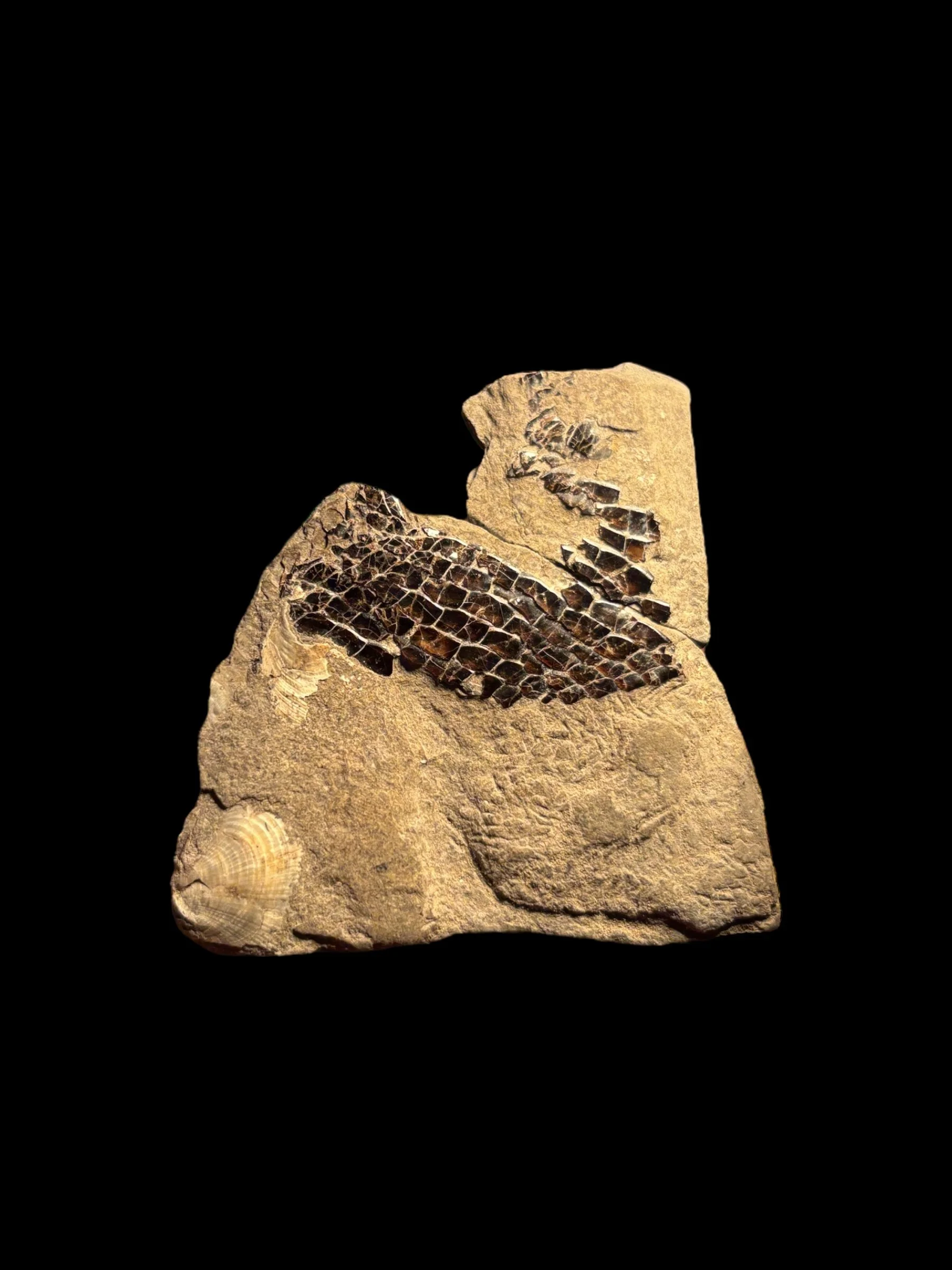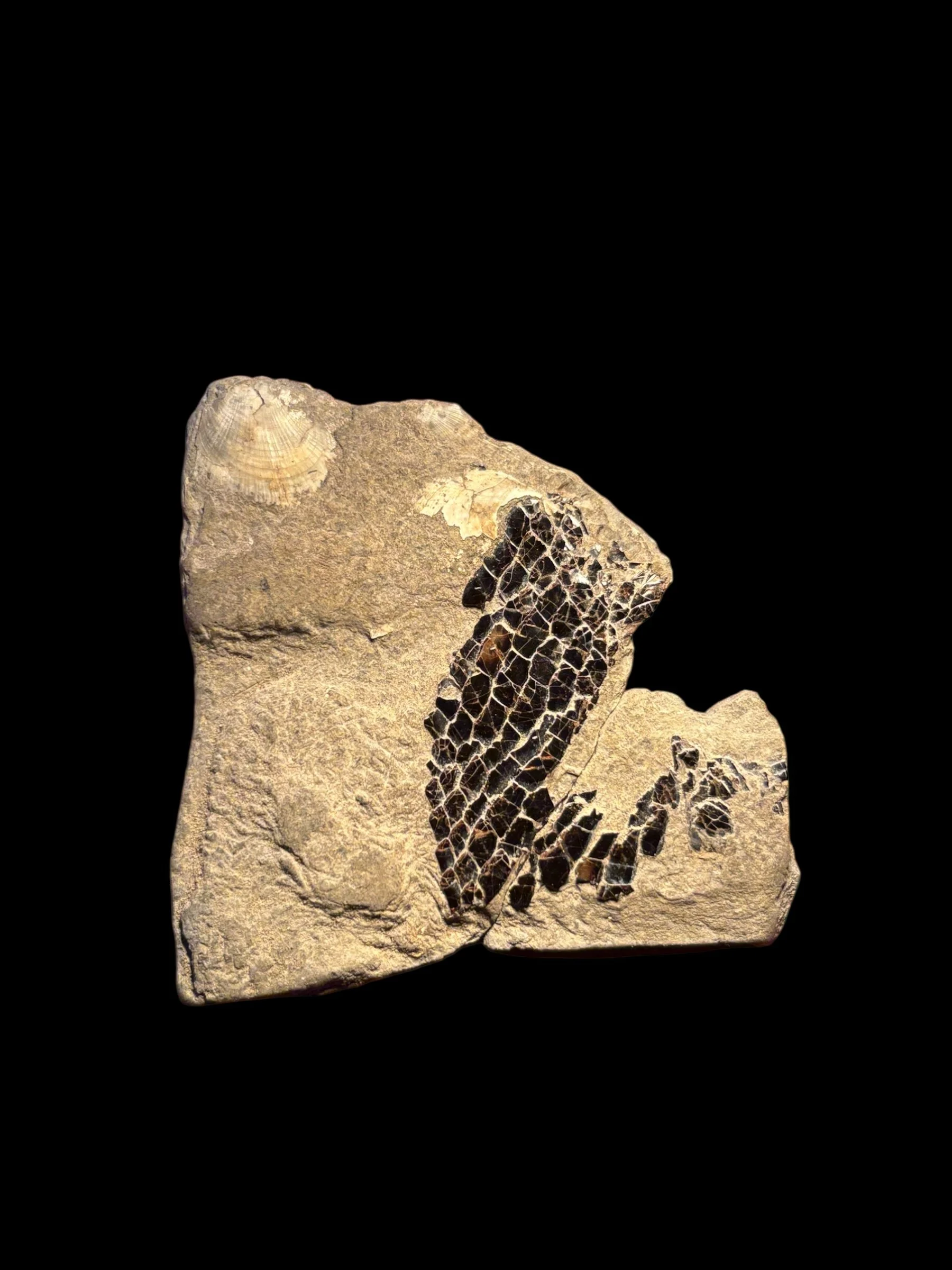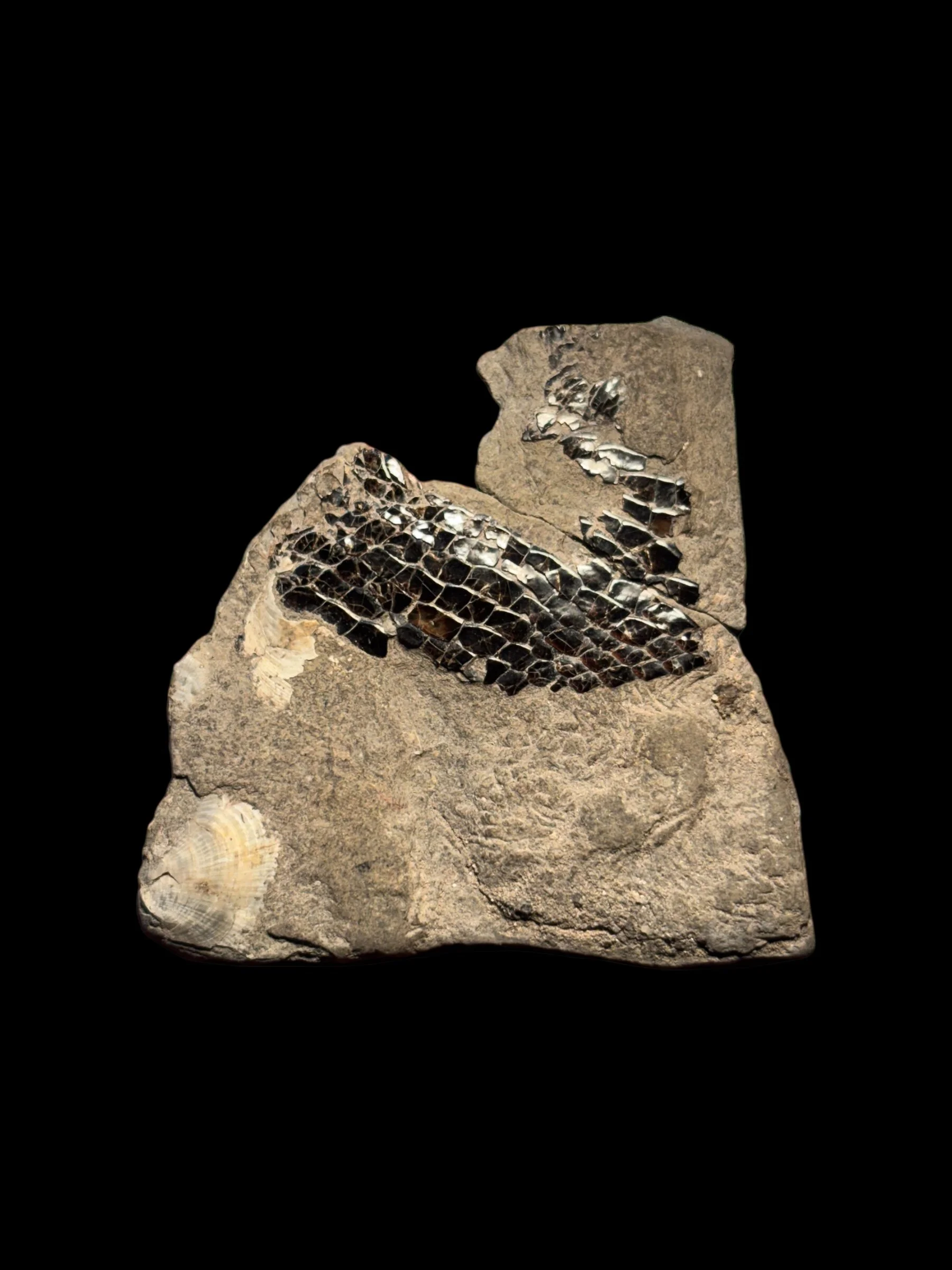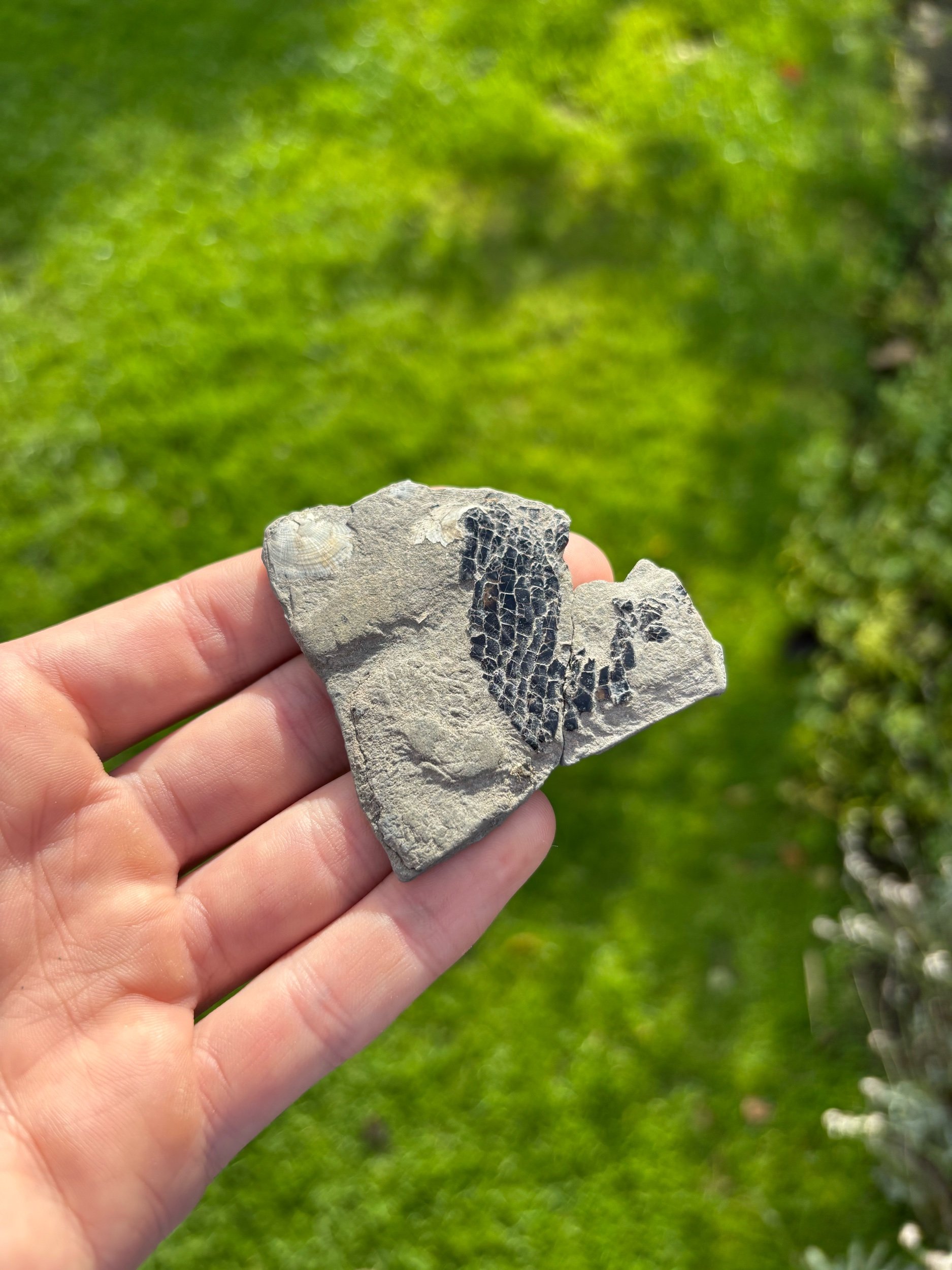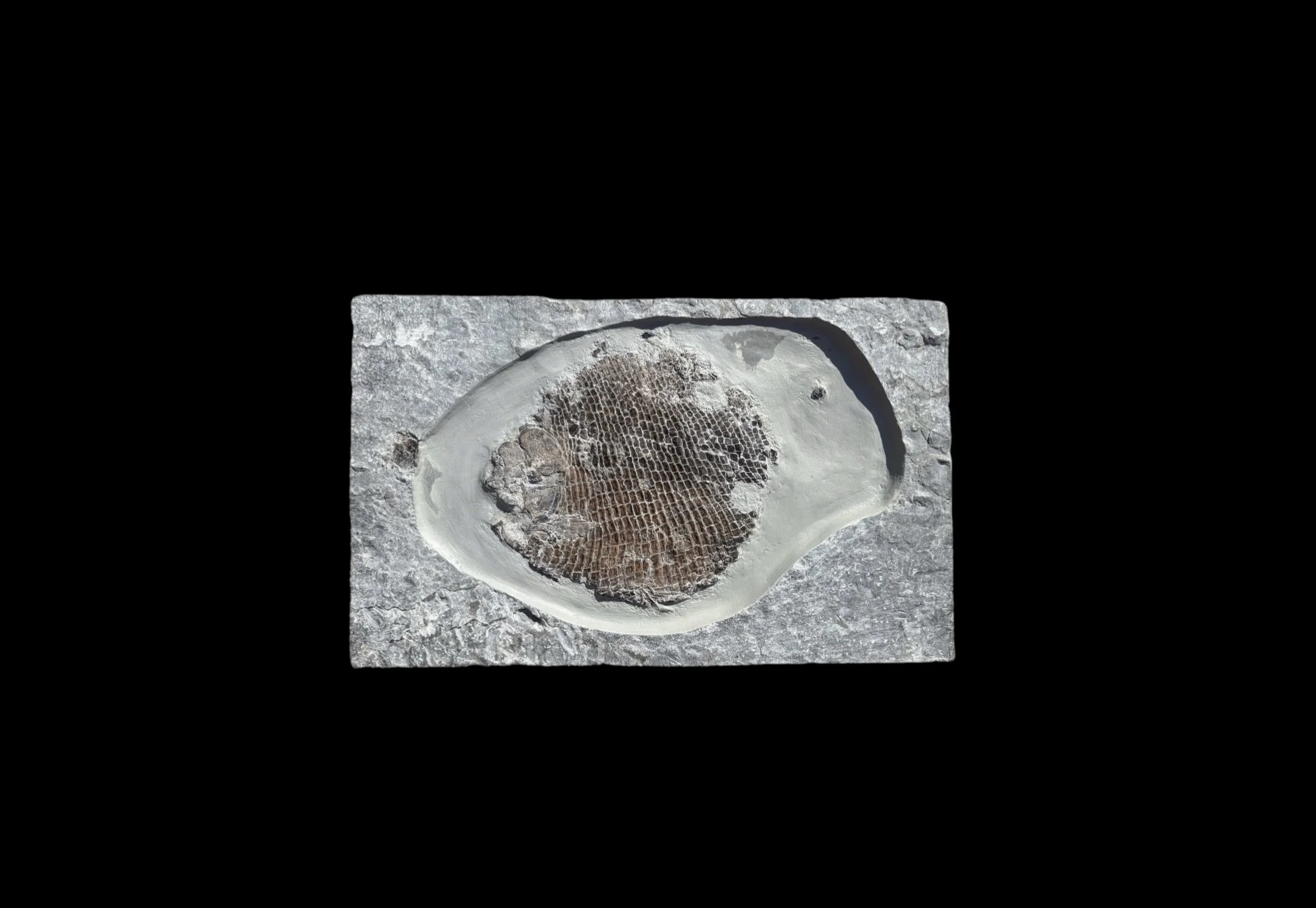
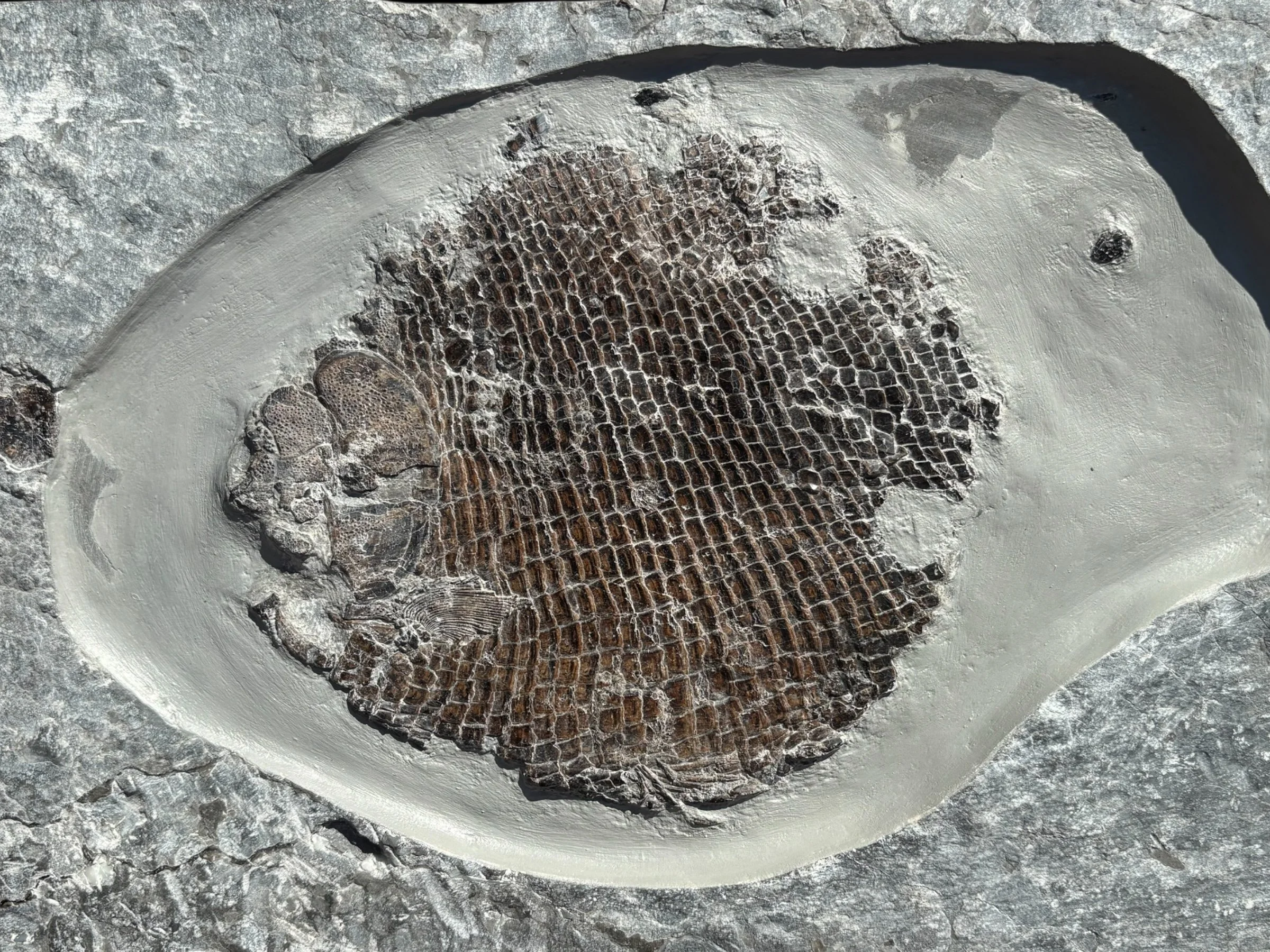




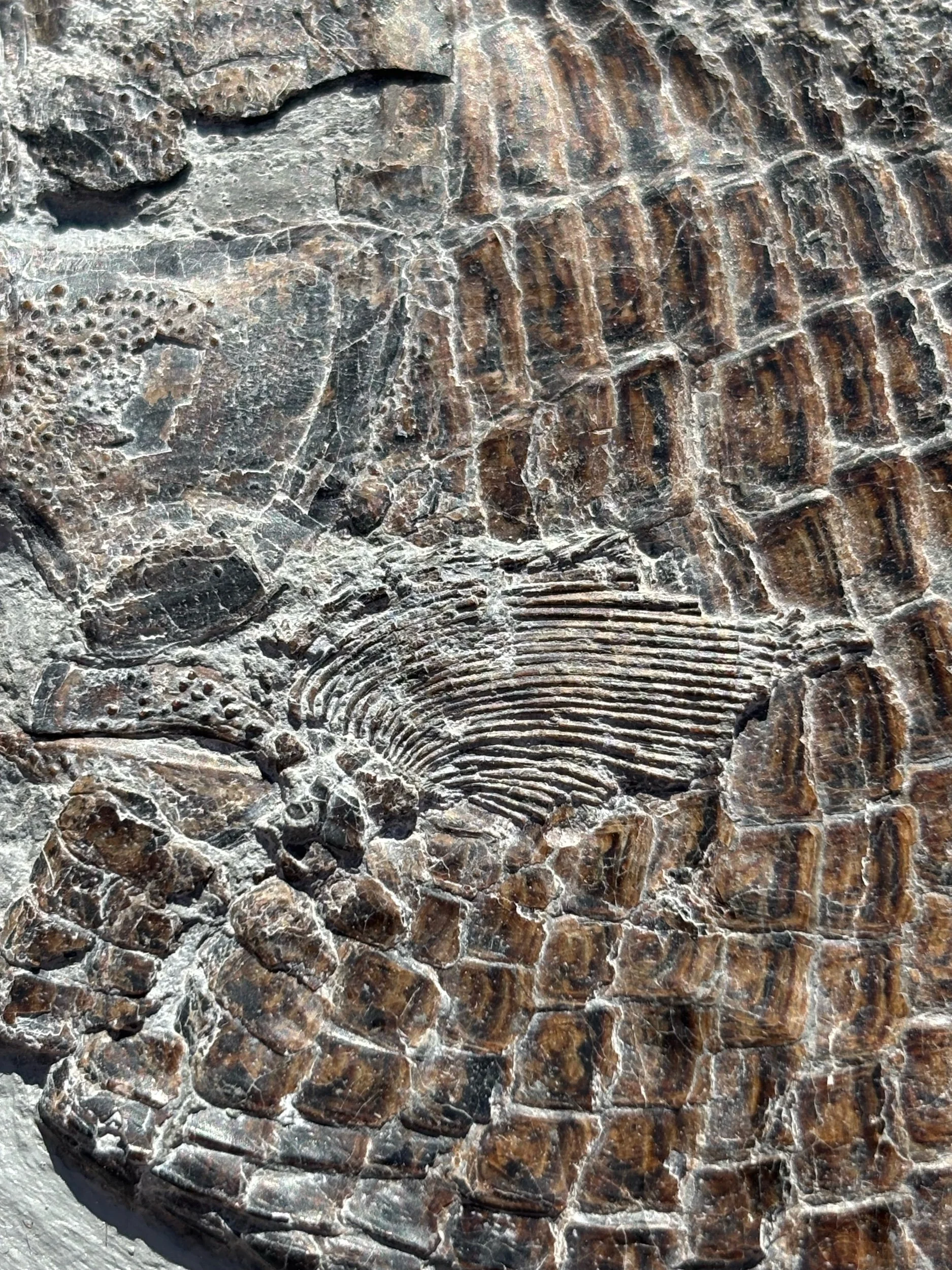
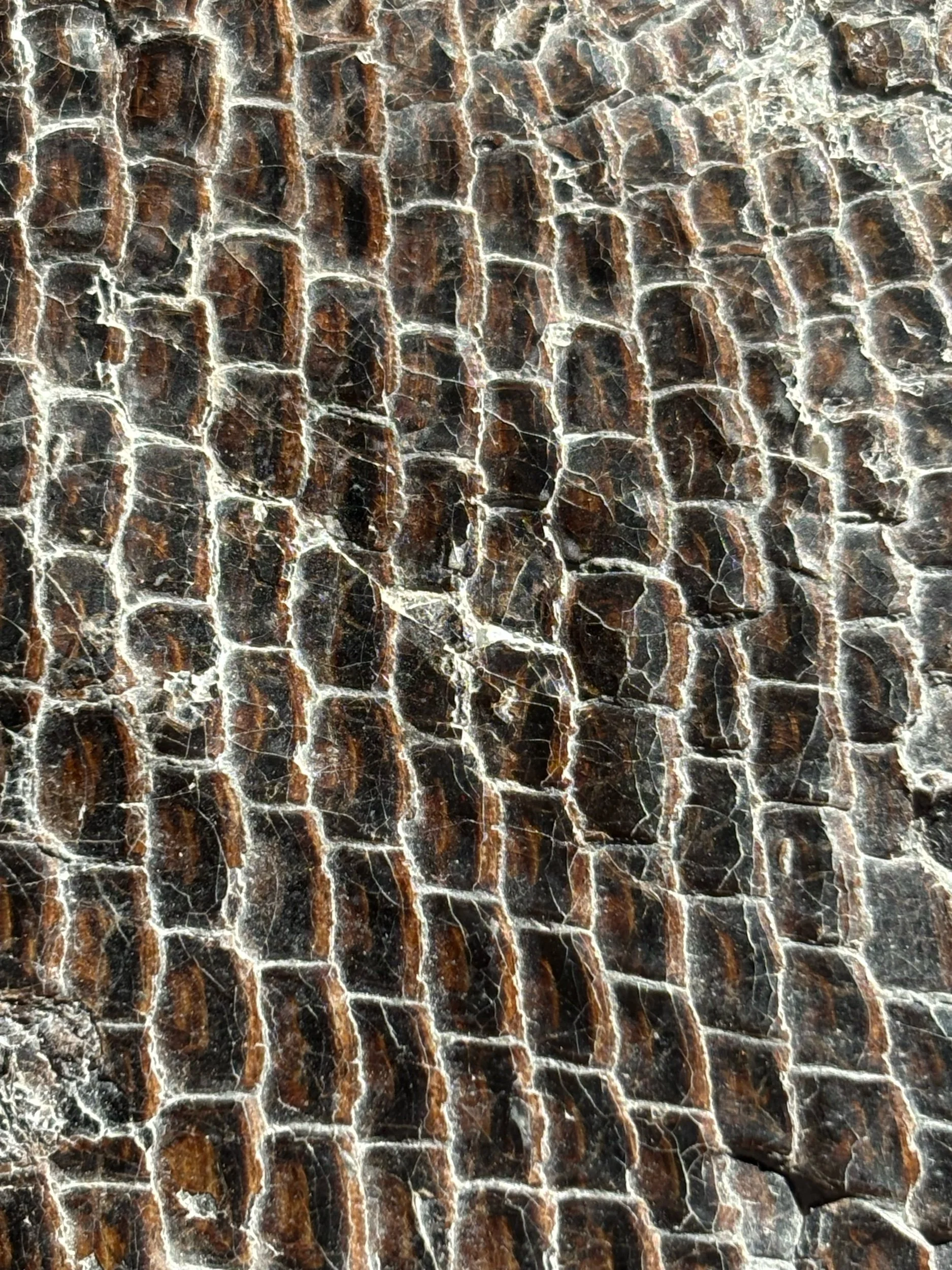
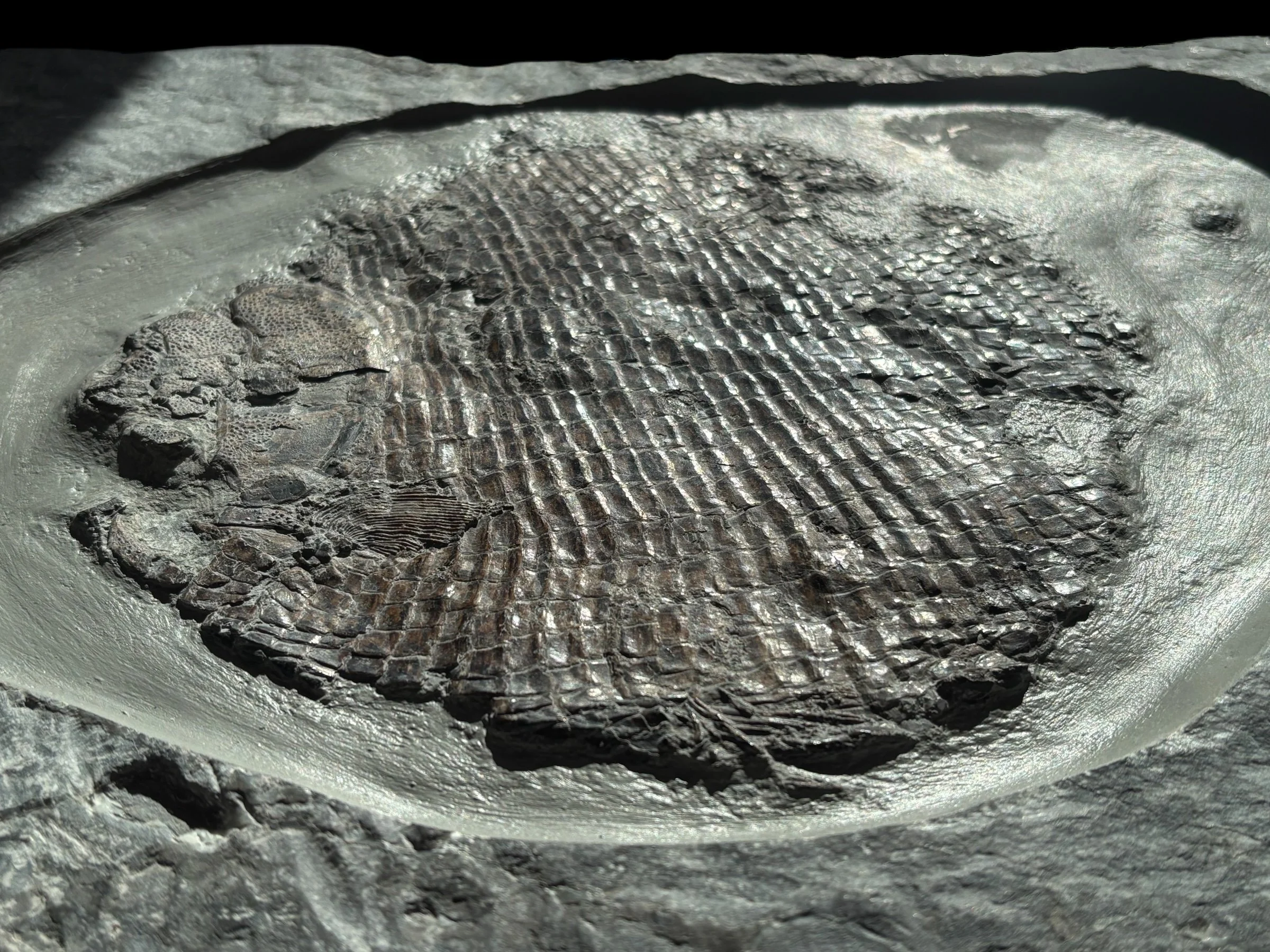
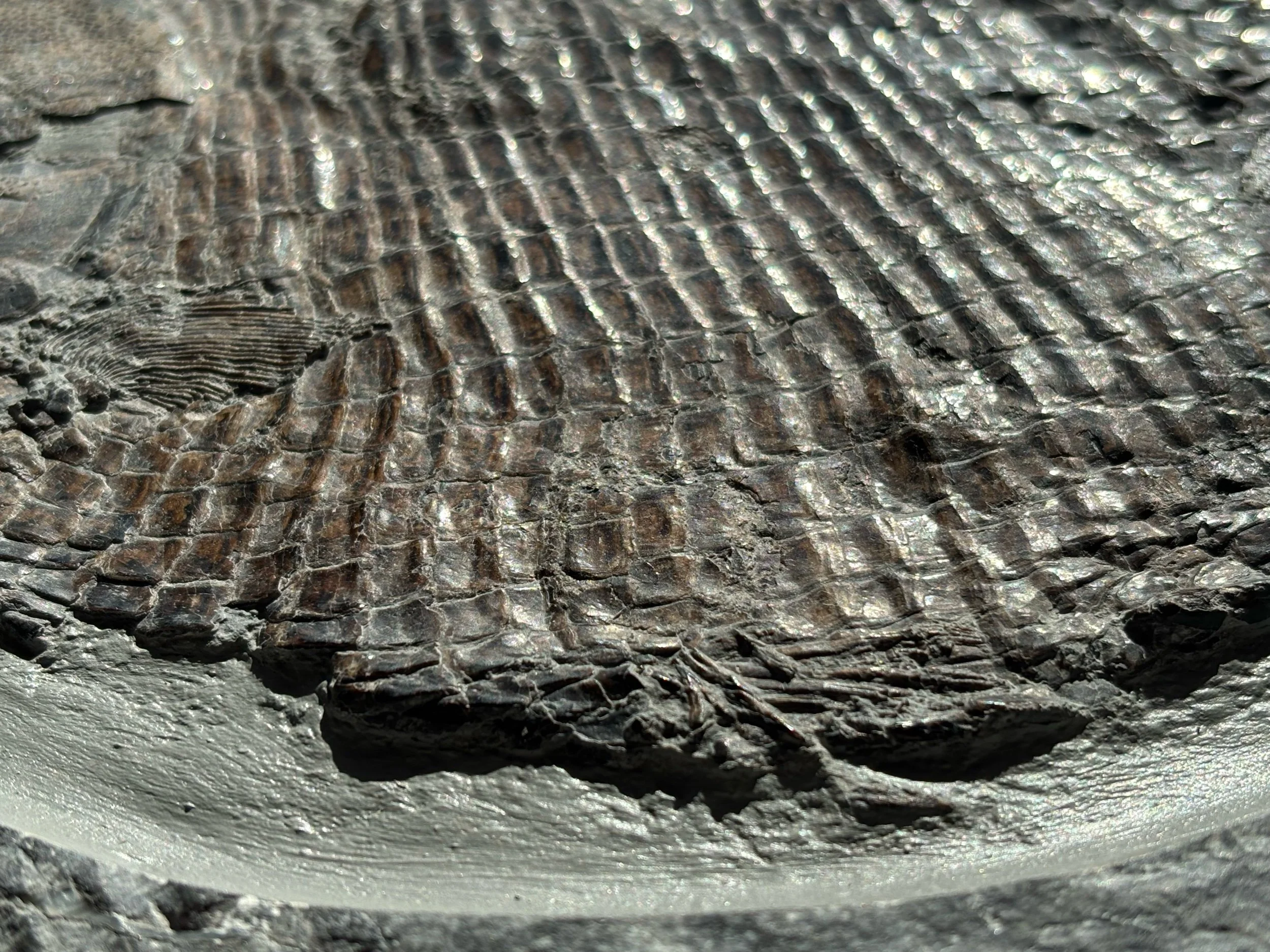
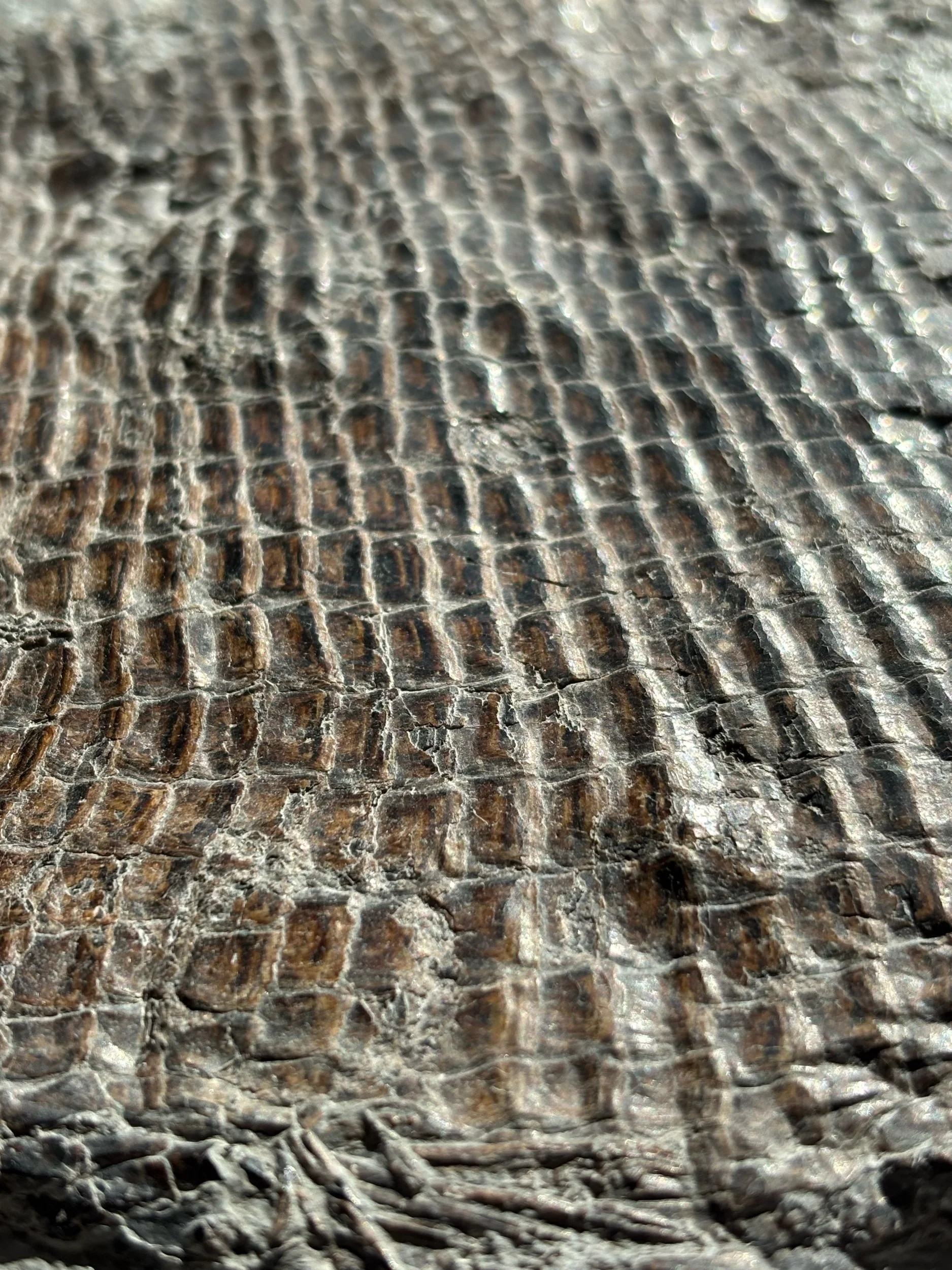
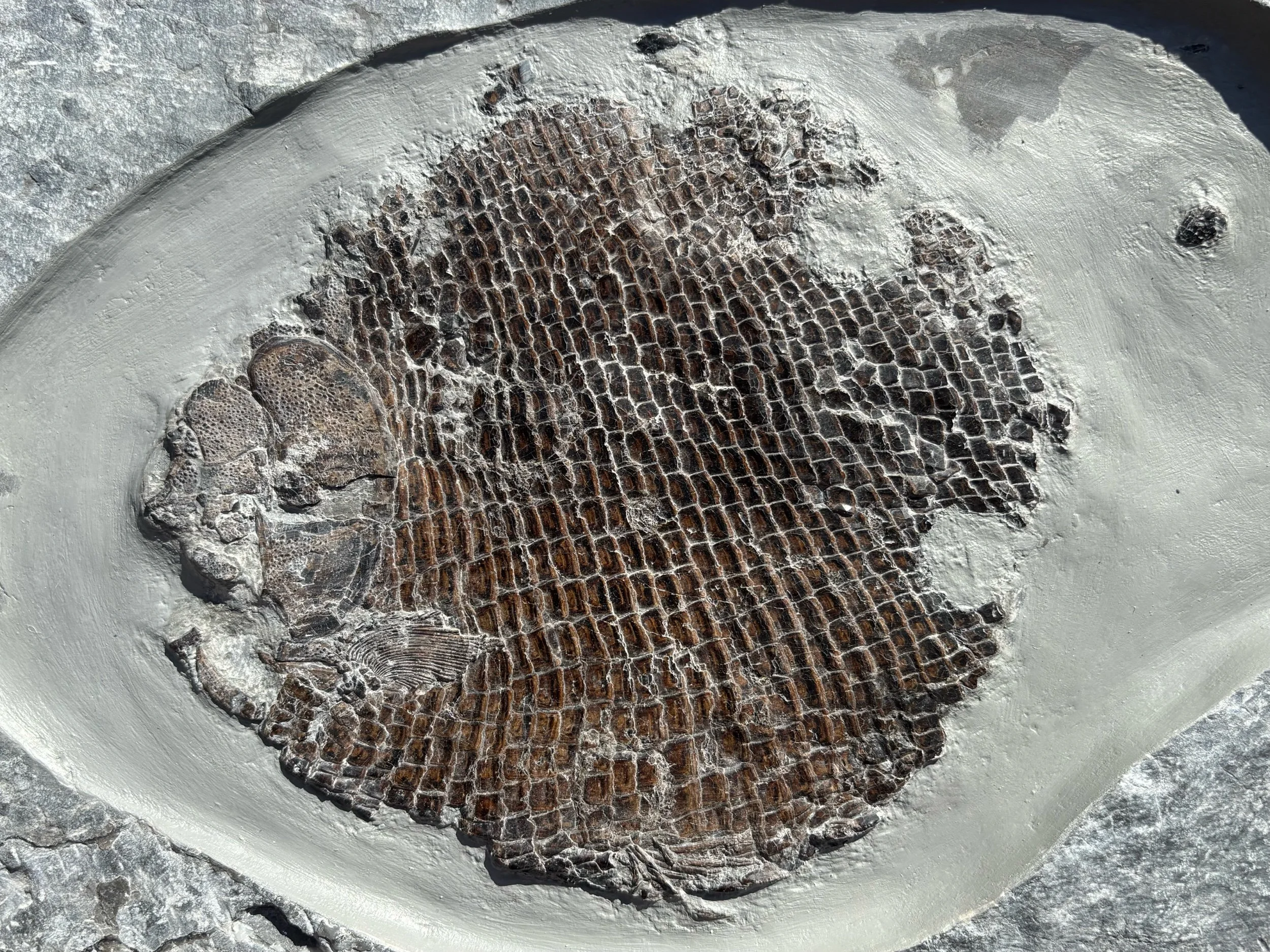

Dapedium Politum Fossil
This fossil was found on the beach at Charmouth in the winter of 2022, and shows fantastic preservation, displaying most of the body of a medium sized dapedium, a classic fossil fish species from the Jurassic Coast.
The fossil was initially found wearing out of the shale bedrock, exposed after a rough sea. Once extracted, the piece was backed with resin and prepared from the other side to reveal the non sea-worn side. The piece has also been painted where the resin showed through to closely match the colour of the shale it was found in. The fish is missing it’s tail and most of it’s head, and it is likely that this is either from scavenging on the seafloor, or it was attacked in life and the predator never got the chance to finish the meal! The pectoral fin is exquisitely preserved and the scales have a golden tint to them. Several of the head plates around it’s gills are also preserved and these have superb detail on them and a fantastic texture. No finish has been put on the fossil, and the colour and shine from the scales is all natural.
Fossils like this are very rare and are not often found on the Jurassic Coast, perhaps fewer than 3 per year are found on average in varying states of preservation.
Dapediums were a type of heavily armored, deep-bodied fish with ganoid scales that likely preyed on hard-shelled prey, using their rounded teeth to crush through shells. They were preyed upon by Ichthyosaurs and plesiosaurs and were likely vital in the food chain in the Jurassic oceans millions of years ago. Dapediums were present in the Jurassic oceans around Europe in the lower and middle Jurassic, and have mainly been found in the rocks around Lyme Regis, England and Holzmaden, Germany.
Age: Approximately 195 million years old.
Fossil dimensions: 19cm x 16cm
Rock dimensions: 38 × 23 × 6 cm
This fossil was found on the beach at Charmouth in the winter of 2022, and shows fantastic preservation, displaying most of the body of a medium sized dapedium, a classic fossil fish species from the Jurassic Coast.
The fossil was initially found wearing out of the shale bedrock, exposed after a rough sea. Once extracted, the piece was backed with resin and prepared from the other side to reveal the non sea-worn side. The piece has also been painted where the resin showed through to closely match the colour of the shale it was found in. The fish is missing it’s tail and most of it’s head, and it is likely that this is either from scavenging on the seafloor, or it was attacked in life and the predator never got the chance to finish the meal! The pectoral fin is exquisitely preserved and the scales have a golden tint to them. Several of the head plates around it’s gills are also preserved and these have superb detail on them and a fantastic texture. No finish has been put on the fossil, and the colour and shine from the scales is all natural.
Fossils like this are very rare and are not often found on the Jurassic Coast, perhaps fewer than 3 per year are found on average in varying states of preservation.
Dapediums were a type of heavily armored, deep-bodied fish with ganoid scales that likely preyed on hard-shelled prey, using their rounded teeth to crush through shells. They were preyed upon by Ichthyosaurs and plesiosaurs and were likely vital in the food chain in the Jurassic oceans millions of years ago. Dapediums were present in the Jurassic oceans around Europe in the lower and middle Jurassic, and have mainly been found in the rocks around Lyme Regis, England and Holzmaden, Germany.
Age: Approximately 195 million years old.
Fossil dimensions: 19cm x 16cm
Rock dimensions: 38 × 23 × 6 cm
